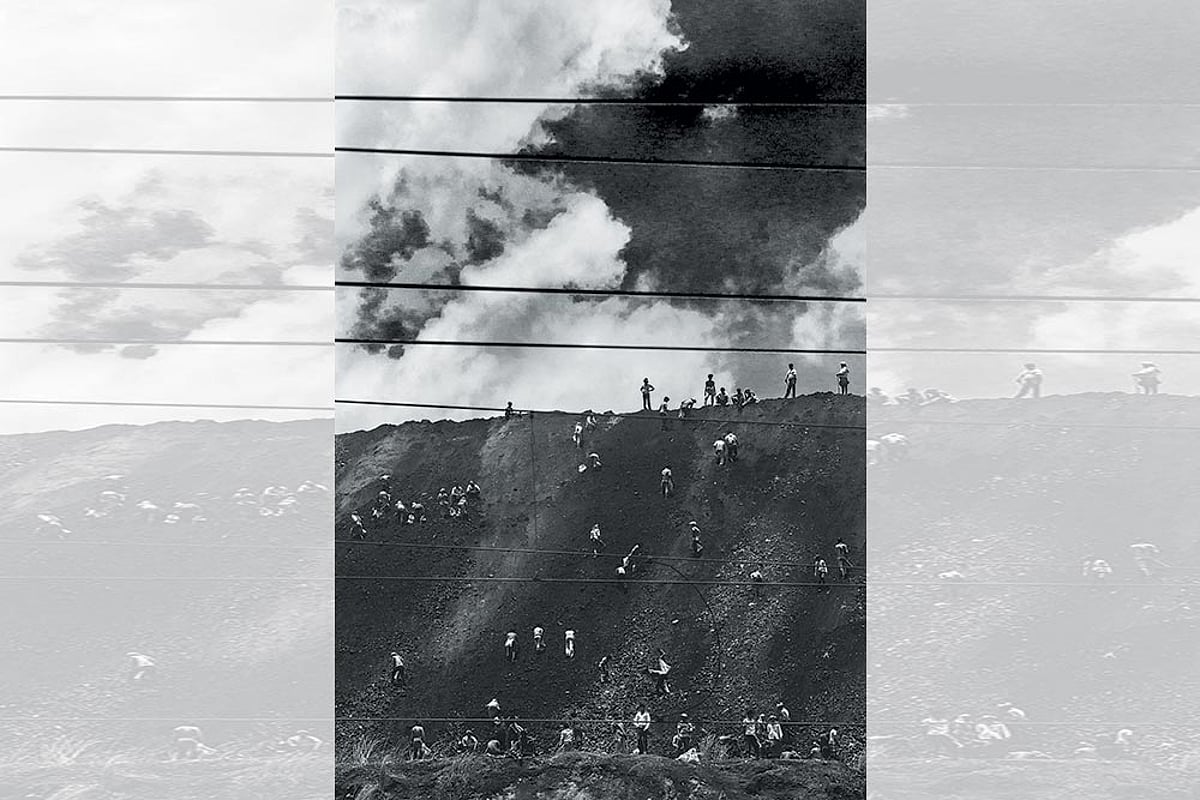Dust and Fire: Villagers scavenge the mountainous dumps in the hope of finding scrap metal for selling in exchange for quick cash

People sitting inside The Black Diamond Express that runs between Kolkata and Dhanbad

A family of four allegedly involved in the business of illegal coal collection carry off huge loads to the nearby markets for a meagre sum

Low levels of water in the rivers flowing in the region bring precious stones and minuscule gold granules that are hand-collected by local women
Visible plumes of fumes escape through cracks in the earth. The air feels heavy with coal dust and the acrid smell of burning coal. The ground itself appears scorched, blackened in places where underground fires have been burning for decades. Villages in and around Jharia—one of India’s largest coal reserves, but also known for its dangerous coal seam fires—resemble a smouldering wasteland.
On a typical day, one can see miners with soot-covered faces and worn-out clothes, carrying tools and navigating the smoky terrain. Trucks filled with coal drive by, kicking up clouds of dust. Nearby, clusters of makeshift settlements house families who depend on coal mining for their livelihood. The fires make the ground unstable, leading to frequent cave-ins and occasional toxic gas releases. Many homes are cracked by the heat and subsidence caused by the fires beneath.
Children play nearby, despite the dangers. Life goes on for the older people who have grown up around the mines.
Jharia as a township is a mix of migrants and locals who have no choice but to work under hazardous conditions.
Typically, the miners work 8 to 12 hours a day and often six days a week, though some may work longer to meet daily production demands. Most are not satisfied with their wages. Many do not have access to stable employment contracts or benefits. Prolonged exposure to coal dust and smoke leads to chronic respiratory problems such as bronchitis, asthma and even pneumoconiosis (black lung). Some miners might receive sporadic health check-ups or medical aid through government or company programmes, but these are often insufficient.
As Jharkhand goes to the polls, people living in villages in and around Jharia expect the administration to act. They say they have been breathing fire for too long.

These Lives Matter: The aftermath of a non-functional open cast coal mine which has left huge craters in the ground, changing the ecology and landscape of the region

A miner standing in an open coal mine

A rat hole miner in Jharia

A young boy working as a coal miner in Jharia
Text and Photos: Abhishek Basu
(This appeared in the print as 'A Smouldering Wasteland')


















